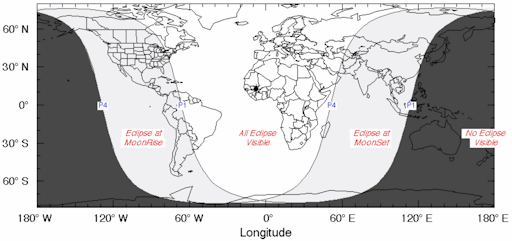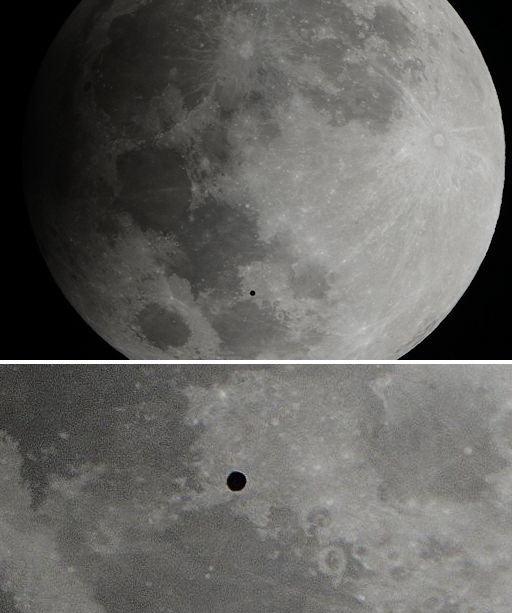Volgens de folklore heet de volle maan in februari de sneeuwmaan. Dit omdat het voor de mensen op het noordelijk halfrond de felste volle maan is, gezien de terugkaatsing van het maanlicht op de gevallen sneeuw (ik zeg even niks
De penumbrale maansverduistering is overal ter wereld te zien, behalve in Australië.....mits een wolkendek geen roet in het eten gooit.
Penumbral moon:
The full Moon will lose some of its usual luster on Friday night, Feb. 10th, as an eerie shadow creeps across the lunar disk. It's a penumbral lunar eclipse, visible from parts of every continent except Australia. Graphic artist Larry Koehn created this animation of the event:A penumbral eclipse happens when the Moon passes through the pale outskirts of Earth's shadow. It is much less dramatic than a total lunar eclipse. In fact, when observers are not alerted beforehand, they sometimes do not realize an eclipse is underway. Nevertheless, the shadow of Earth can be plainly visible to the naked eye.
The best time to look is Friday night around 07:44 p.m. Eastern Time (00:44 UT Saturday). That's the time of maximum coverage when Earth's shadow creates a clear gradient of light and shadow across the lunar disk. Check out this global visibility map to see if you are in the eclipse zone:

According to folklore, a full Moon in February is called the "Snow Moon." For northerners, it often feels like the brightest Moon of the year as moonlight glistens off the white landscape. For a while on Friday night, the Snow Moon won't seem quite so bright.
Bron: http://spaceweather.com/
Object voor maan tijdens verduistering waarschijnlijk een stratosfeer ballon
As observers around the planet were capturing images of Friday's penumbral eclipse, one photographer saw something unusual: a round object crossing in front of the Moon. "I was using a 125mm telescope to capture the eclipse when the small black disk appeared," says Luis G. Verdiales from Loiza, Puerto Rico. "It was moving too slow to be a satellite, so slow that I was able to capture it with my camera four times. It got my attention because it was round!"
Photo Luis G. Verdiales
Verdiales contacted the Caribbean Island's largest astronomy organization to find out what it was. Eddie Irizarry of the Sociedad de Astronomía del Caribe explains what happened next:
"After analysing magnified images, we suspected it might be a stratosphere balloon from Google Loon, a project that is testing internet coverage from the stratosphere," says Irizarry. "We checked FlightRadar24.com and indeed found a balloon at 64,400 ft identified as HBAL176. Further analysis showed the balloon was right between the observer and the Moon."
Bron: http://spaceweather.com/

 Morgen is er een penumbrale maansverduistering
Morgen is er een penumbrale maansverduistering




